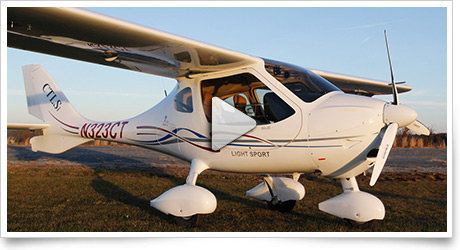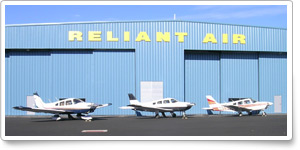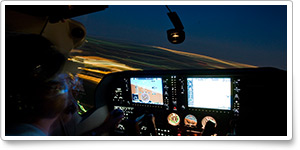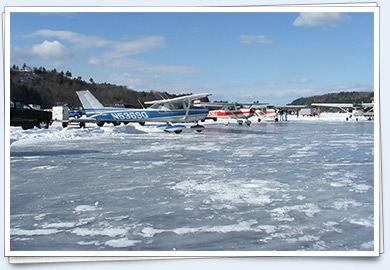| ||||||
| Flying the fuel-injected CTLSi |
| |||||
| Click here for this week's custom content. | ||||||
FeaturedFuel-injected Flight Design: Flying the CTLSi The latest edition of the popular CTLS series from Flight Design sports the new fuel-injected Rotax 912iS, the most obvious upgrade, but not the only one. An electrical system enhanced to provide more power for a panel packed with integrated avionics—including an optional integrated autopilot—also sets the CTLSi apart from its carbureted predecessor. The two-seat special light sport aircraft retains flying qualities that have helped Flight Design build a devoted following, with more than 1,800 aircraft flying worldwide. AOPA got an early look at the new arrival, and a chance to put it through its paces. Read more and watch AOPA Live >> | |
GA NewsFuture of GA sparks debate at Wichita eventWill Wichita, Kan., remain the Air Capital of the World? What kind of a role will diesel or electric aircraft play in GA’s future? A debate among leading aviation editors kicked off the annual On-Air Summit hosted by the Wichita Aero Club on Dec. 12. AOPA Editor in Chief Tom Haines said pilots flying recreationally may reap the benefits of electric power. Read more >> Hindenburg theories tested for Discovery ChannelTwo official investigations left unanswered questions, and any number of theories persist decades after the Hindenburg erupted in a ball of fire over Lakehurst, N.J., on May 6, 1937. Airship historians and aeronautical engineers collaborated with a television production crew to re-create the disaster at scale for the first time to put the most likely theories to the test. The results of their effort will air Dec. 16 on Discovery Channel. Read more >> ‘Top Gun’ returns—in 3-D J. Lloyd Huck rememberedAOPA and the general aviation community lost a stalwart supporter with the Dec. 4 death of J. Lloyd Huck in State College, Pa. Huck, 90, began his flying career during World War II, and remained an active pilot until just before turning 90 in July. Huck made significant contributions to AOPA. He was an AOPA Foundation Board of Visitors Emeritus, having donated his expertise and energy to the foundation’s effort to improve safety, preserve community airports, build the pilot population, and enhance public perception of GA. Read more >> | |||||||||||||||||||||||||||||||||||||||||||||||||
Flight Instructor Refresher Clinics | Air Safety Institute Safety Seminars | |||||||||
For a complete schedule, see AOPA Online. Can’t make it in person? Sign up for the CFI Refresher Online. |
Topics vary—for details and a complete schedule, see AOPA Online. | |||||||||
ADVOCACY
Group to set roadmap for new Part 23 standards
A new group of global stakeholders will work on a standards roadmap “that will help transform the way smaller aircraft are manufactured and certified around the world,” standards body ASTM International announced recently. The committee was formed at the request of the industry to support efforts of the FAA’s Part 23 Aviation Rulemaking Committee. ASTM Committee F44 will hold its next meeting Jan. 10 and 11 in Daytona Beach, Fla. Those interested in participating in standards development can find information about joining ASTM online.
 VFR: Airport bum of the year award
VFR: Airport bum of the year award
Murfreesboro Municipal Airport’s “Airport bum of the year” award was conceived to improve relationships and communications between airport users, operators, and city officials. Southern Regional Manager Bob Minter discusses this year’s award. Read more >>
Member Benefits
Six tips to get your medical faster
Based on frequent interactions with the FAA’s Aerospace Medical Certification Division, AOPA Director of Medical Certification Gary Crump shares six tips on what you can do to hasten the process of wresting your medical certificate from the FAA. Read more >>
Outbreak warning!
Planning your first international trip? Your itinerary probably doesn’t include the unexpected complications caused by a sudden outbreak of illness. Here are a few things you might expect.
AOPA Career Opportunities
Ever dream of turning your passion for aviation into a career? We’re looking for an events coordinator; AOPA eastern regional manager; .NET applications developer; manager, AOPA Flying Club Network; Web developer (eMedia); and Web graphic designer. To learn more about other AOPA career opportunities, visit AOPA Online.
Community
Picture PerfectAOPA’s online photo gallery allows you to upload your own aviation photography as well as view, rate, and comment on others’ photos. Your favorite aviation images from AOPA Pilot are still available online through this new gallery. Take a look, and submit your own photos! | | |
Engage in AviationCheck out user-submitted events from your region. To include an event or to search all events in the calendar, visit AOPA Online. AOPA does not endorse the events listed below, nor have ePilot editors edited the submissions. AOPA assumes no responsibility for events listed.
| |
| |
QUIZ ME!Here’s a question asked by an AOPA member who contacted our aviation services staff through the AOPA Pilot Information Center. Test your knowledge.
Question: I am planning to fly to the Bahamas to go scuba diving. Do I need to wait to fly home after my last dive?
Answer: The Aeronautical Information Manual (AIM) provides some guidance on aeromedical factors. The AIM states that prior to flying an aircraft an airman should allow sufficient time for the body to rid itself of excess nitrogen absorbed during diving. The recommended waiting times are 12 hours for nondecompression diving, and 24 hours for diving requiring decompression stops. However, the AIM recommends that for all flights over 8,000 msl, the wait time should be 24 hours. Find more information in the AIM.
Got a question for our aviation services staff? The AOPA Pilot Information Center is a service available to all members as part of the annual dues. Call 800/USA-AOPA (800/872-2672), or email to [email protected]. |
| |
|
|
| |
| | ||||
| ePilot Editor: | Contributors: | | Production Team: | Advertise in ePilot: |
| Member Tools: Send feedback | ePilot Archive © 2012 Aircraft Owners and Pilots Association | 421 Aviation Way Frederick, MD 21701 | Phone 800/USA-AOPA | Fax 301/695-2375 | ||||










